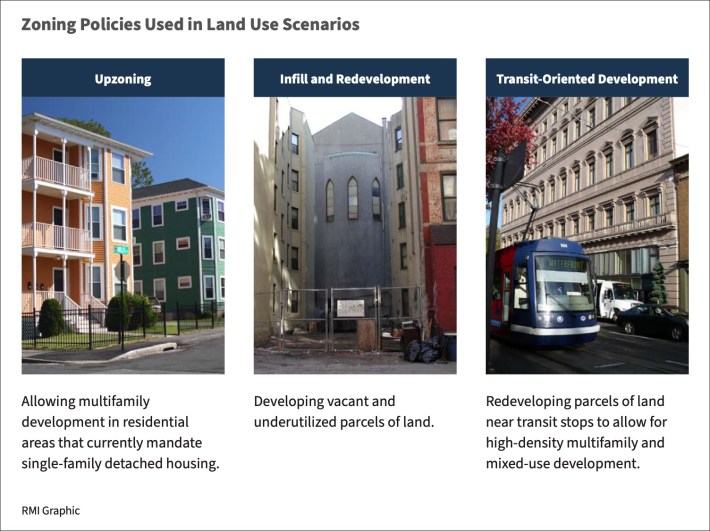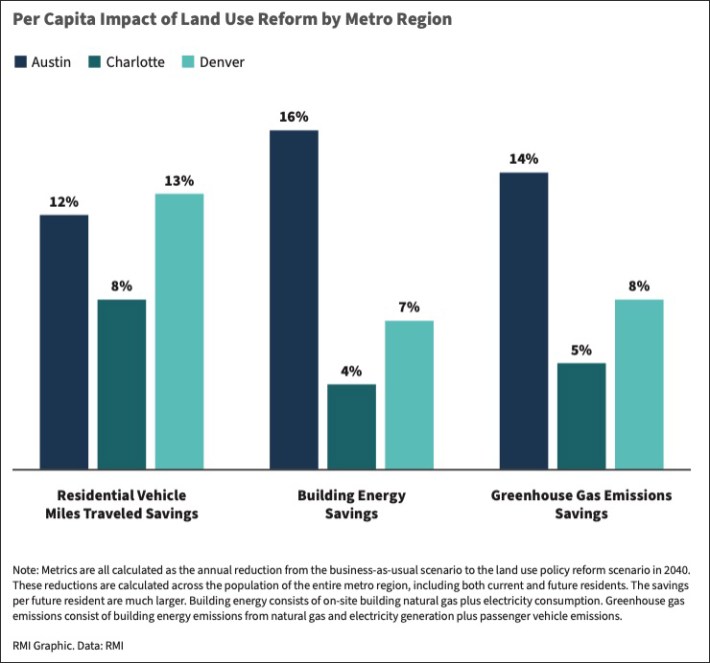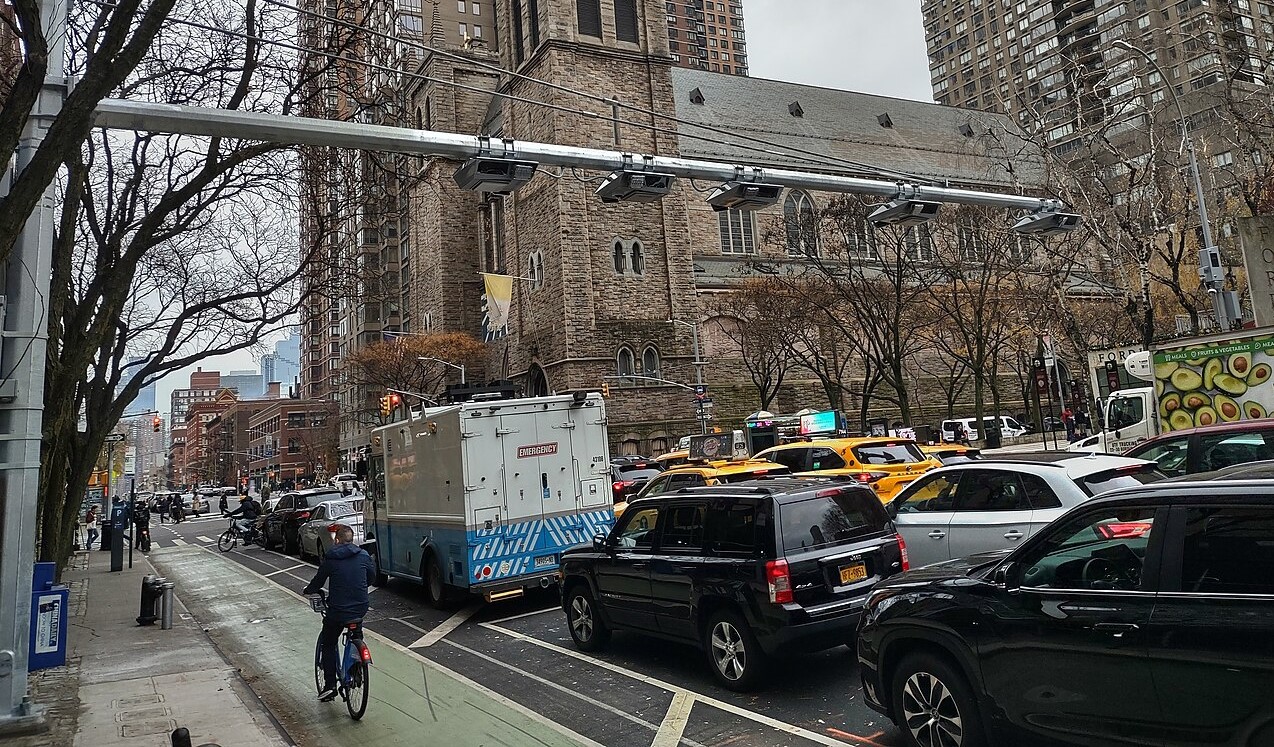A new report has finally put hard numbers to America's most overlooked climate and car-cutting solution: more development in neighborhoods where people don't need to drive everywhere.
In an analysis conducted by nonprofit think tank RMI, researchers first modeled the likely climate and transportation outlooks for three fast-growing cities — Austin, Charlotte, and Denver — based on local growth forecasts, assuming their leaders would make no significant changes to the local zoning code between now and 2040, and new homes would be built on the suburban fringe where car travel is a necessity.
Then, the researchers combed over those same cities' maps parcel by parcel to identify places that were practically begging for redevelopment — think vacant lots in pedestrian-friendly, single-family neighborhoods that could be apartment buildings, or crumbling, low-value strip malls along major transit lines whose owners would be keen for a buyout — and modeled what would happen if local leaders allowed that land to be put to better use.
"A lot of people have an intuitive understanding that compact places are low-carbon environments, but policymakers [don't know] exactly what kinds of reductions they can expect if they reform these policies that functionally mandate disconnected communities," explained Ben Holland, manager at RMI and a lead author of the report.
"We’re trying to change the conversation within the climate community, [and make it clear that] we need to take land use seriously as a climate solution."

Holland and his colleagues showed that small land-use shifts can have significant climate impacts.
In Denver, the researchers estimated that ambitious but realistic zoning reforms could cut vehicle miles traveled (VMT) by as much as 13 percent across the region over the next 17 years; in Austin and Charlotte, meanwhile, regional VMT reduction would be a little more modest — 12 and eight percent, respectively — but in both cities, car travel would be reduced by 34 percent within the city limits.
Those estimates assumed some increases to the local transit network, but they didn't assume any explosions in bike lane construction or other radical new investments into sustainable modes, which could help accelerate the shift even faster. And considering that earlier RMI modeling found that America needs to cut per-capita VMT by 20 percent and put 70 million electric vehicles on the road by 2030 to meet our national climate targets, it seems pretty clear that we'll need to do all of the above.

Holland acknowledged that getting rid of exclusionary zoning alone won't be enough to make American cities walkable again, much less make human-centered neighborhoods accessible to the Black, brown and low-income people who such practices were deliberately designed to push out in the first place.
Doing that, the report authors emphasized, will require not just weedsy regulatory reforms to things like parking minimums and height limitations, but also bold, sustained efforts to keep equity concerns "at the forefront" of the redevelopment process, and make sure that vulnerable communities are the ones who benefit from it the most.
To even start those crucial conversations, though, climate advocates will first need to embrace land use reform as a crucial climate and equity tool — and unfortunately, not enough of them do.
"Within the transportation climate space, the subject of equity has often been focused on questions like , 'how do we get more people into electric vehicles? How do we make them more affordable for low income households?'" Holland said.
"Which is important, but at the same time, basic access needs get kind of overlooked ... Every major environmental nonprofit on the planet is trying to develop an equity-centered sets of strategies right now. So why aren’t we talking about things like proximity to high-quality transit?"
If analyses like this can help communities answer those questions — and stay strong in the face of political forces that reject ambitious land use reforms — Holland hopes that Americans will finally see good zoning as the foundation for a strong climate plan, rather than an afterthought.
"We don’t have any illusions that ending single family zoning and allowing for more multi-family housing will solve everything," he said.
"It’s a necessary tool to start with, but it’s not the only tool. But this is far and away the highest-impact tool for reducing VMT that we have ... I don’t think we can kick the can down the road anymore; we’ve been doing that for ages, and every year that we wait, the situation gets worse and worse."






